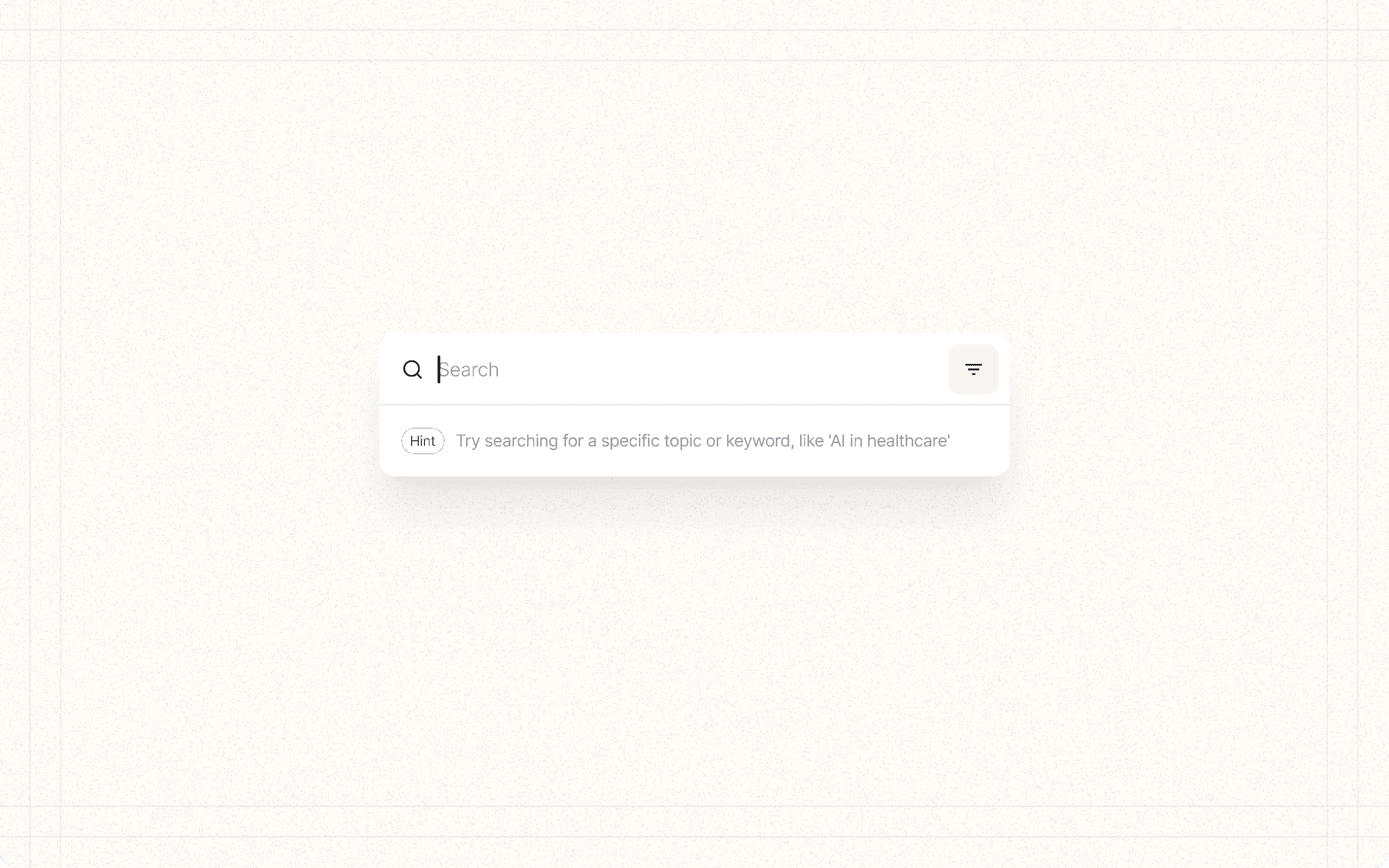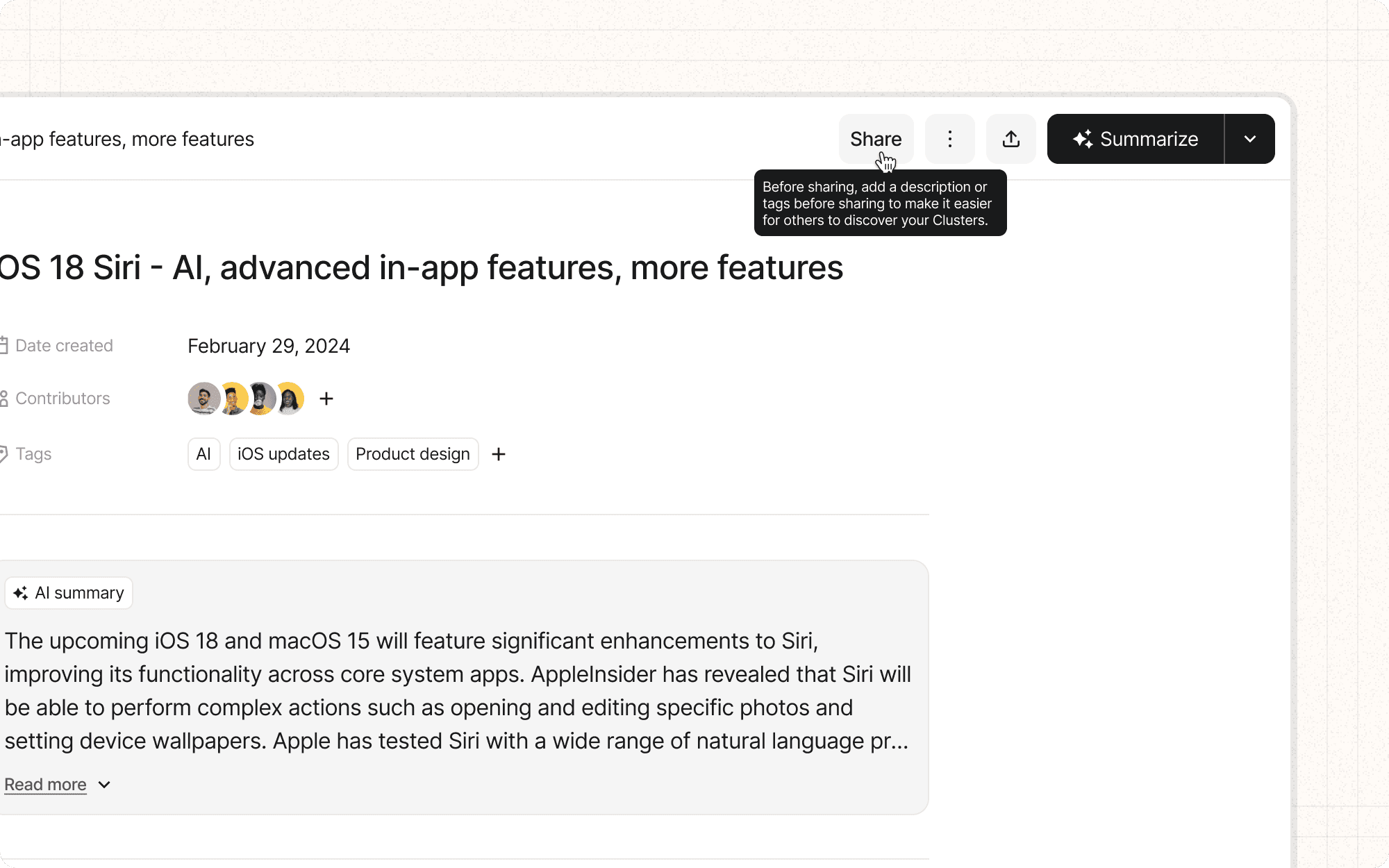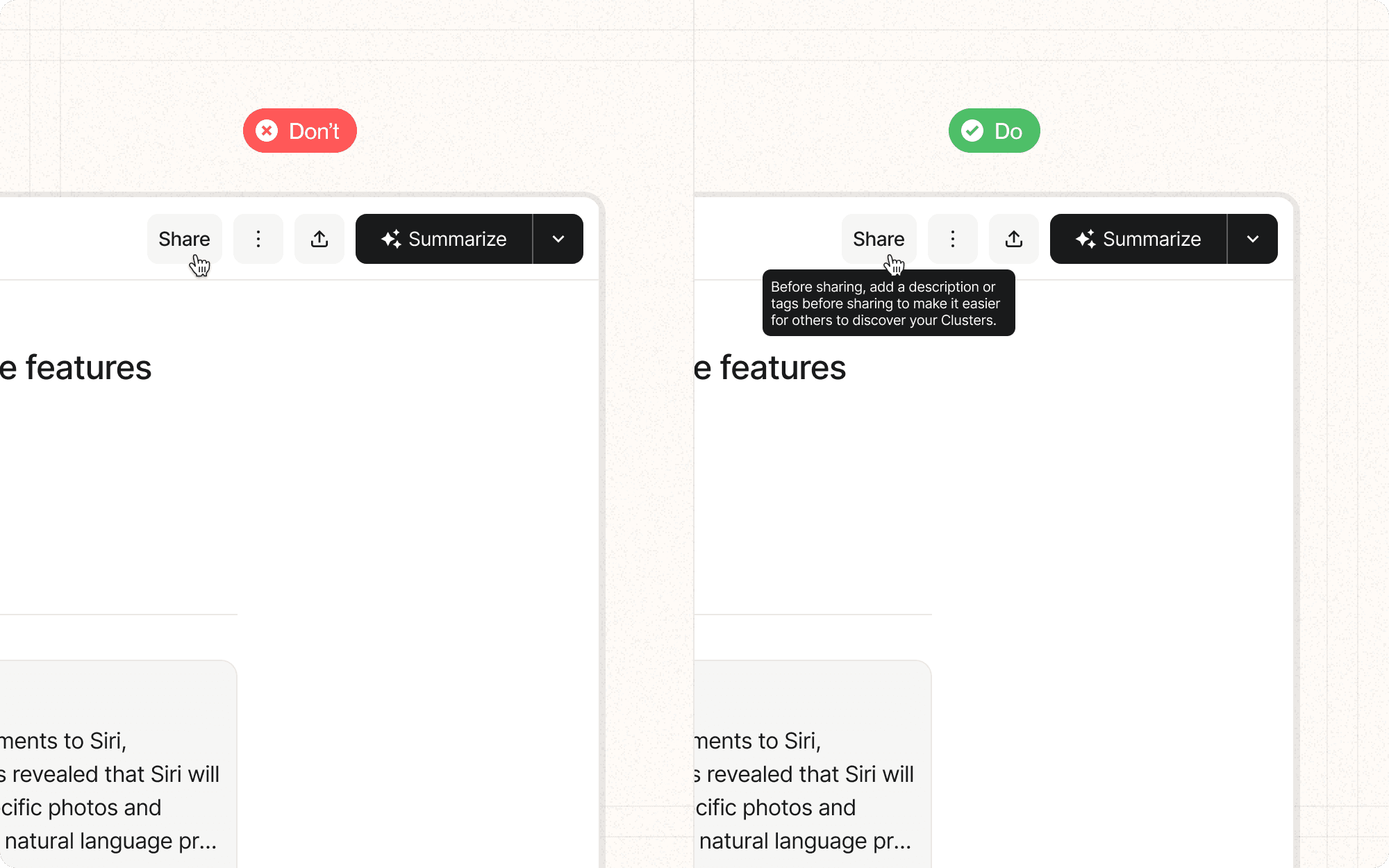Contextual tips and hints
Contextual tips and hints are small, targeted pieces of information that appear within the interface to guide users as they interact with specific features or elements. These tips provide just-in-time guidance, helping users understand how to use features or accomplish tasks without interrupting their workflow.
Benefits and Use Cases
Provides guidance at the point of need, reducing cognitive load.
Example
In Cluster, show a tip next to the content tagging field, suggesting popular tags or explaining how tagging improves content discoverability.
Helps users discover and understand features organically.
Example
Display a hint when a user hovers over Cluster's AI analysis button, briefly explaining how it can help summarize and categorize content.
Encourages exploration of advanced features.
Example
Show a tip highlighting Cluster's advanced search syntax when a user starts typing in the search bar, encouraging more precise queries.
Reinforces best practices and optimal usage patterns.
Example
Provide a hint when users are setting up team permissions in Cluster, suggesting role-based access for better security.
Psychological Principles Supported
Just-in-Time Learning. Contextual tips support the principle of providing information exactly when it's needed, enhancing retention and application.
Example
In Cluster's content editor, provide context-sensitive writing tips based on the type of content being created (e.g., blog post, social media update).
Progressive Disclosure. Tips and hints can progressively reveal more advanced features or concepts as users become more familiar with the basic functionality.
Example
Gradually introduce more advanced Cluster features through tips as users engage more with the platform, such as AI-powered content suggestions after they've mastered basic content creation.
Curiosity. Well-crafted hints can spark users' interest in exploring features they might not have discovered on their own.
Example
Use a "Did you know?" format for some Cluster tips to introduce lesser-known but valuable features, like advanced collaboration tools or analytics insights.
Implementation Guidelines
DON'T
Overwhelm users with too many tips at once
Use tips as a substitute for good, intuitive design
Show the same tips repeatedly to users who have dismissed them
Interrupt user tasks with overly intrusive or poorly timed hints
Forget to update tips when features or best practices change
DO
Keep tips concise and directly relevant to the user's current context
Use clear, action-oriented language in your hints
Provide a way for users to dismiss or hide tips they've seen
Use visual cues to make tips noticeable without being intrusive
Test the timing and frequency of tips to ensure they're helpful, not annoying


